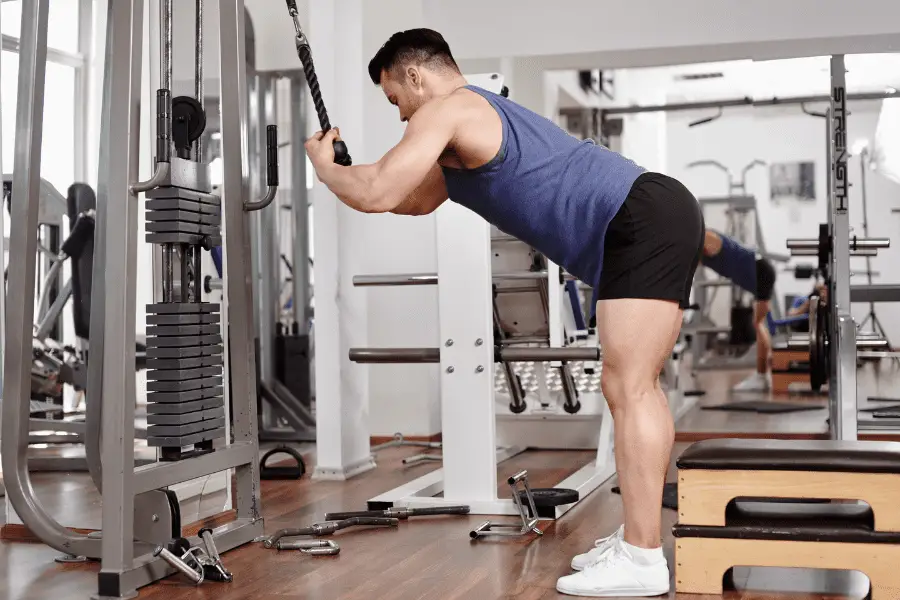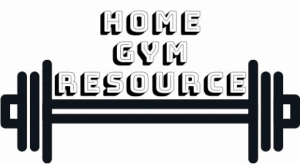Are you wondering if you can fit a cable station under the ceiling of your home gym? You’re not alone. I’ve looked at a few popular models and how tall they are.
How tall is a cable station? The average cable station for a home gym is 85” tall with heights ranging from 80” to 99”. A few models fit comfortably under a 7’ tall ceiling. Cable stations have to be reasonably tall because most of the population has to be able to stand under it to do exercises.
For more information about different models and the exact heights, keep reading.
Cable Station Height
Not all cable stations are the same. There are different types, designs and models. The cable stations on this list are different types but all reasonable for a home gym. So while some are pretty big, they aren’t as big as the ones you will usually see in a commercial gym.
Suggested post: Why you need a cable station in your home gym
| Brand | Model | Type | Load type | Height (inch) | Max weight (lbs.) |
|---|---|---|---|---|---|
| Valor | BD-62 | Single side | Plates | 80 | 250 |
| Valor | BD-61 | Double side | Plates | 80 | 400 |
| Body-Solid | PCCO90X | Double side | Plates | 82 | 300 |
| Body-Solid | BFFT10R | Double side | Single Weight Stack | 84 | 190 |
| Body-Solid | PFT100 | Double side | Double weight stack | 83 | 320 |
| Body-Solid | GDCC210 | Double side | Double weight stack | 84.2 | 320 |
| Body-Solid | S2FT | Double side | Double weight stack | 99 | 420 |
| Body-Solid | SDC2000G2 | Double side | Double weight stack | 91 | 470 |
| Xmark | XM-7626 | Double side | Double weight stack | 83 | 400 |
| Inspire Fitness | Ft1 | Double side | Double weight stack | 83 | 330 |
| Inspire Fitness | Ft2 | Double side | Double weight stack | 89 | 330 |
| Powertec | ws-190 | Double side | Plate loaded | 82.3 | 1000 |
| Mim USA | FT44 | Double side | Plate loaded | 87 | ? |
| ARCHON | Sinlge side | Plate loaded | 90.125 | 250 | |
| FreeMotion | EXT crossover | Double side | Double weight stack | 84 | 420 |
| Average | 85.44 |
As you can see, the average height of a cable is about 85”. The heights range from 80” to 99” tall. In many home gyms the ceiling isn’t very tall so knowing the height of your gym and future cable station is important.
Cable stations have to be tall enough for most people to fit under so that’s the reason why none of them are less than 80 inches tall. If they would be any shorter, a good part of the population wouldn’t be able to use it.
The lowest most home gym ceilings are is about 7’. Deduct an inch or two from that 7 feet because you’ll likely put some kind of gym flooring down. That means an 80” to 82” cable station will fit. That doesn’t leave a whole lot of choice although there are a few.
Suggested post: Creating a fully functional home gym under a 7′ ceiling
If your ceilings are a bit taller, you’ve got a lot more choice in cable stations. What’s best for you depends on more than just the height though.

Cable station types
As you might see from the chart, there are different types of cable stations.
The two main differences to look out for;
- Amount of cables
- Load type
Cables
There are two main types of cable stations for home gyms. There is the version with just a single cable and there is a version with two cables.
Find here how to fix the cables in a cable station
The single cable version means you can attach only one attachment to the machine. A bar, D handle, rope, etc. If that attachment is mean to be used with two hands, that’s not a problem. Cable curls or lat pull downs for example are perfectly possible on a machine like this.
Suggested post: 5 essential cable attachments.
On a double cable machine, you can attach two different attachments and they are on both sides of your body. That means you can attach two D handles and do chest flies, shoulder raises, etc. Two cables means you can move your hands independently. This gives more exercise possibilities.
Also, the machines with two sides often have two different weight stacks. That means you’re moving your arms separately. This can prevent muscle imbalances and is one of the big benefits of using a cable machine.
Suggested post: Why you need a cable station in your home gym

Load type
Another difference between cable stations is how you set the weight or resistance. There are two ways you can load up the machine;
- Plates
- Weight stack
In most commercial gyms, you’ll see the weight stack version. In the machine, there is a stack of (usually rectangular) weight plates. There is a sliding pin that goes through the plates from the top. This pin has holes in it and so to the plates. You put a small pin through the plate and the sliding pin and you’ve got the weight it tells you on the plate. This is a very quick way of changing the resistance on a machine.
Within the weight stack machines there are also two options. There are the machines with one and two weight stacks. Of course the single cable machines only have one stack and most of the two cable machines have two. However, there are a few rare cases where a two cable machine only has a single stack. That means both cables are moving the same weight.
That isn’t optimal since it means that if you move one arm more, the other side gets lighter. This defeats half of the purpose a double sided cable station has. Also you have less total weight to play with so you might run out of progression quicker.
The other loading option is with the same plates you put on a barbell. The cable station has sleds with sleeves on them, like the sleeves on a barbell. You can load these up with the weight you like (within the manufacturers limits) and use it in the same way as other cable stations.
This type of loading has one big benefit; it’s much cheaper. If you’ve already got the weight plates, you can save a significant amount of money by buying a plate loaded cable machine. After all you don’t have to pay for the weight stacks.
The downside to plate loading is that it takes more time and effort to load the weight you want. Quickly changing from a low to a high weight means you have to load several plates instead of just changing a pin. The other drawback is that these machines are often made with budget in mind.
Cable station with weight stacks can be very expensive, easily costing several thousands of dollars for a good one. That money doesn’t only go to the weight stacks however. The more expensive machines often have much more adjustment options and are just built to a higher standard. Not everyone needs those things for a home gym so a cheaper plate loaded cable machine might be your ticket.

Related questions
Do you have to lubricate the cables in a cable station? No, the cable shouldn’t be lubricated. If the machine doesn’t move smoothly, lubricating the guide rods or pulleys will probably solve it. Regular lubrication and maintenance should keep your machine working like new.
